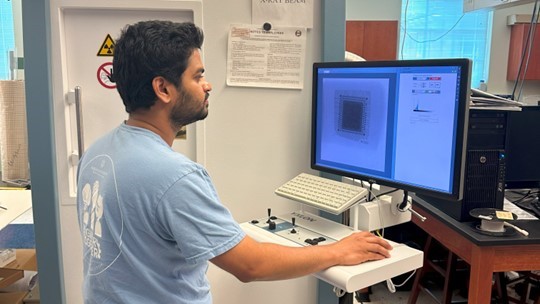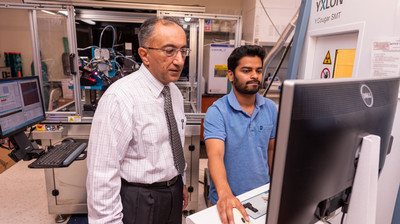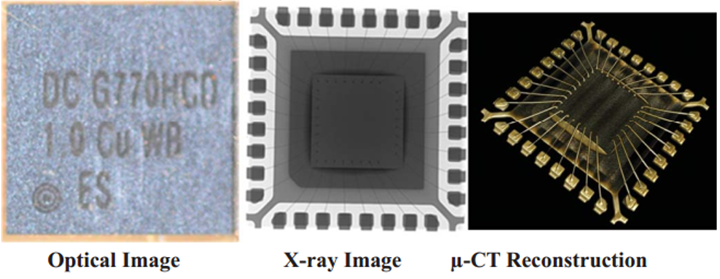

Synopsis:
In the era of digitization and interconnected industrial production, non-destructive testing (NDT) with X-ray and computed tomography (CT) is the ideal choice for modern quality control and assurance. These technologies are crucial for evaluating individual components and entire production processes, assessing both geometry and composition properties of specific parts.
Industrial X-ray involves generating two-dimensional (2D) images of components, while industrial CT combines these 2D images to create comprehensive three-dimensional (3D) models. Both techniques require an X-ray source to emit radiation through the object to an X-ray detector. The detectors, which can be either one-dimensional line detector arrays (LDA) or two-dimensional flat-panel detectors (digital detector arrays, DDA), capture the radiation. In the resulting images, different shades of gray indicate varying density values, revealing material properties and potential defects. This makes NDT with X-ray and CT indispensable for ensuring the quality and integrity of industrial products.

Recent Related Publications:
- Lall, P. and Kothari, N., 2020, July. Effect of voids on thermo-mechanical reliability of QFN solder joints. In 2020 19th IEEE Intersociety Conference on Thermal and Thermomechanical Phenomena in Electronic Systems (ITherm)(pp. 1255-1263). IEEE.
- Lall, P., Kasturi, M., Kothari, N. and Locker, D., 2019, September. X-Ray Micro-Computed Tomography Based Fe Models to Capture Realistic Manufacturing Variability in Cu-Al Wirebonds and Solder-Joints in QFNs. In SMTA International(pp. 33-45).
- Lall, P., Kasturi, M., Suhling, J. and Lockers, D., 2019, May. Stress Strain Analysis on Stitch Bond of Cu-Al Wirebonds Using X-ray Micro-CT Technique. In 2019 18th IEEE Intersociety Conference on Thermal and Thermomechanical Phenomena in Electronic Systems (ITherm)(pp. 841-846). IEEE..
- Lall, P., Kothari, N., Deshpande, S. and Nguyen, L., 2019, May. Study of the Effect of Solder-Joint Voiding using X-ray MicroCT Data-based FE Models with Experimental Validation. In 2019 18th IEEE Intersociety Conference on Thermal and Thermomechanical Phenomena in Electronic Systems (ITherm)(pp. 1160-1167). IEEE.
- Lall, P., Kothari, N., Deep, J. and Lowe, R., 2018, May. Analysis of progressive damage in fuze electronics using micro-computed tomography and finite element models. In 2018 17th IEEE Intersociety Conference on Thermal and Thermomechanical Phenomena in Electronic Systems (ITherm)(pp. 1160-1168). IEEE.
- Lall, P., Kothari, N., Deep, J. and Lowe, R., 2017, May. Assessment of reliability of missile fuze using micro-CT data based finite element technique with digital volume correlation. In 2017 16th IEEE Intersociety Conference on Thermal and Thermomechanical Phenomena in Electronic Systems (ITherm)(pp. 1131-1138). IEEE.
- Lall, P., Kothari, N., Deep, J., Foley, J. and Lowe, R., 2017, May. Development of FE Models and Measurement of Internal Deformations of Fuze Electronics Using X-Ray MicroCT Data with Digital Volume Correlation. In 2017 IEEE 67th Electronic Components and Technology Conference (ECTC)(pp. 497-506). IEEE.
- Lall, P., Kothari, N. and Deep, J., 2017, August. Damage Progression in Fuze Assemblies Subjected to High-G Mechanical Shock Using X-Ray Digital Volume Correlation. In International Electronic Packaging Technical Conference and Exhibition(Vol. 58097, p. V001T03A008). American Society of Mechanical Engineers.
- Lall, P., Kothari, N., Foley, J., Deep, J. and Lowe, R., 2016, May. A novel Micro-CT data based Finite Element Modeling technique to study reliability of densely packed fuze assemblies. In 2016 15th IEEE Intersociety Conference on Thermal and Thermomechanical Phenomena in Electronic Systems (ITherm)(pp. 456-463). IEEE.

